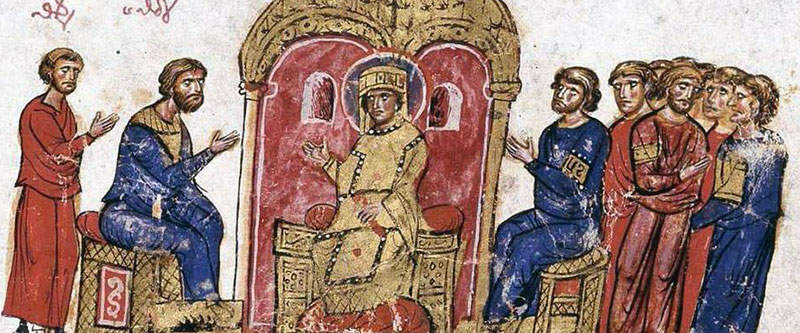In church history there are two significant Leo IIIs. One was the pope who crowned Charlamagne emperor in 800 AD. The other was emperor in Constantinople from 717-741AD. It is the second Leo that is in view in this church history snippet.
The iconoclast controversies of the eighth and ninth centuries are unique in that they are not driven primarily by churchmen or theologians. These certainly participate, but they are not the catalysts that would force the Church to deal with a controversy that had been brewing for some time. It was the iconoclastic policies of emperor Leo III, also known as Leo the Issaurian, that forced a formal treatment of this subject by the church.
Leo III came to the throne during a time of upheaval in the Byzantine empire. That turmoil can even be seen in how he ascended to the throne. Leo III was not a natural heir of the throne, but a military commander who usurped the throne from another. And in the midst of that political chaos, Leo adds theological controversy by articulating and implementing a policy of iconoclasm within the Byzantine empire. Iconoclasm, for the sake of this subject, is the destruction of religious images. Leo, as the catalyst of bringing this disagreement in the church into focus, is a significant man in church history, especially when it comes to the development of the church’s understanding of whether images of Jesus are permitted.
Relatively little is preserved of Leo III’s arguments in favor of the destruction and/or removal of such images from churches. Understanding his views has to come from looking at the response of his opponents. However, it is known that he began his assault on images in 726. Though the motivations for doing so are far from clear, it was likely partly religious, but not purely so. Certainly there was a religious component to his iconoclasm, however, it seems to have been tinged with pragmatism and superstition. According to some, his religious actions were influenced by a desire for political stability in a time of turmoil and uncertainty. Wherever he found himself on the spectrum from pragmatism to principle, it is not fair to discount Leo’s religious impulses entirely. Though perhaps motivated in part by the social condition of his empire, Leo III did make a theological argument as well.
Leo III’s iconoclastic policy was pretty straightforward. He believed images of Jesus and/or the saints were idolatrous and should not be allowed in his empire. The biblical foundation for his argument was based on the second commandment:
“You shall not make for yourself a carved image, or any likeness of anything that is in heaven above, or that is in the earth beneath, or that is in the water under the earth. You shall not bow down to them or serve them, for I the LORD your God am a jealous God, visiting the iniquity of the fathers on the children to the third and the fourth generation of those who hate me, but showing steadfast love to thousands of those who love me and keep my commandments.” (Exodus 20:4-6).
The initial line of argumentation from those seeking to forbid images of Jesus is a fairly simple appeal to the second commandment. Leo III seems to have made a basic connection between an image of Jesus and the prohibition in Exodus 20:4. The position articulated by Leo III is the opening salvo of a controversy that would continue intermittently into the Protestant Reformation and even into today.

